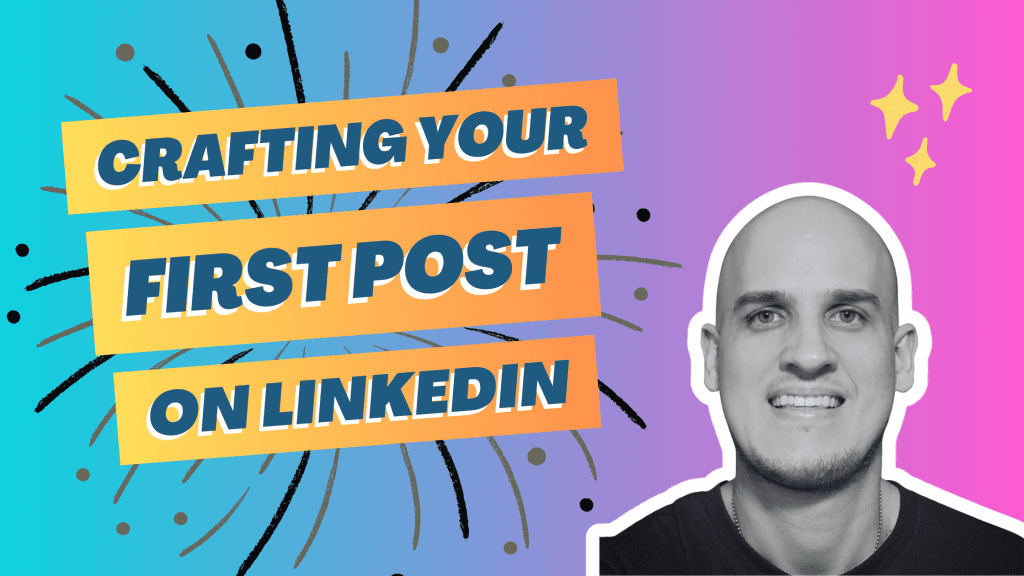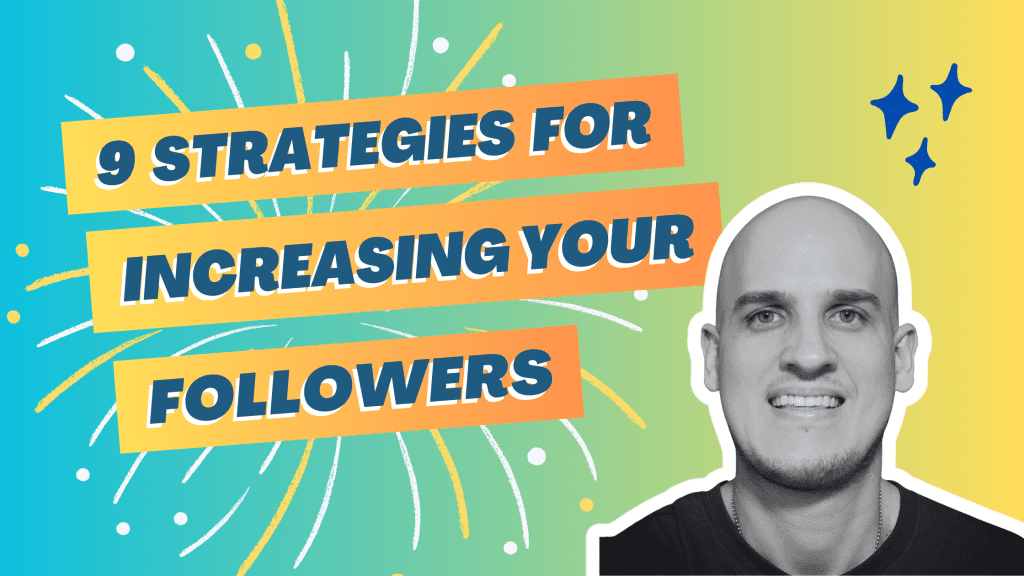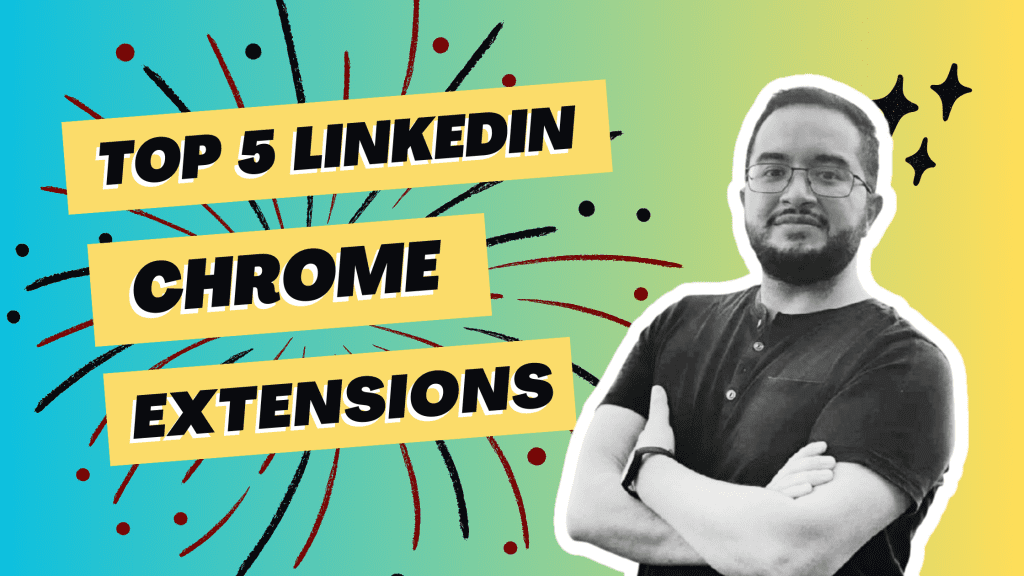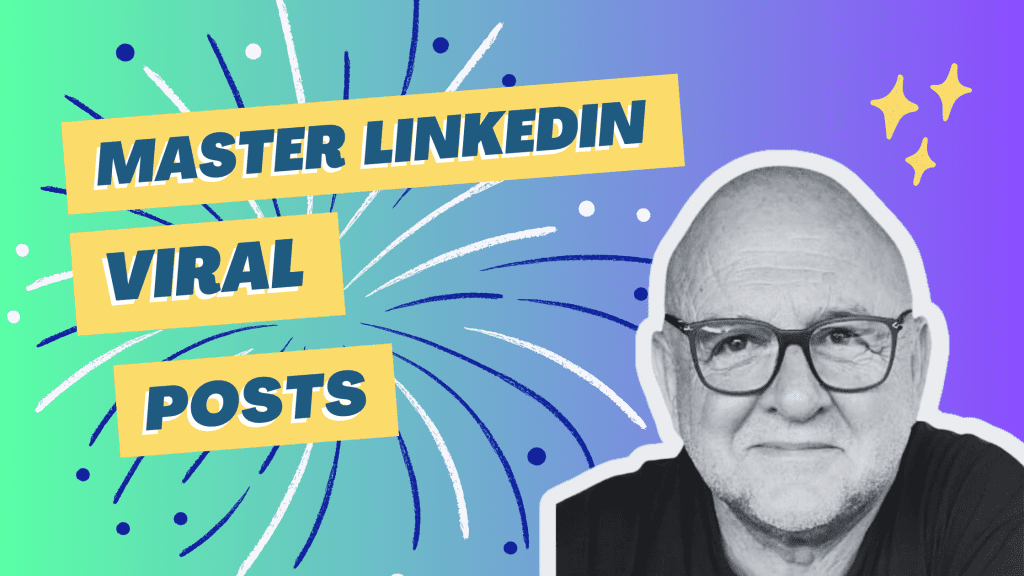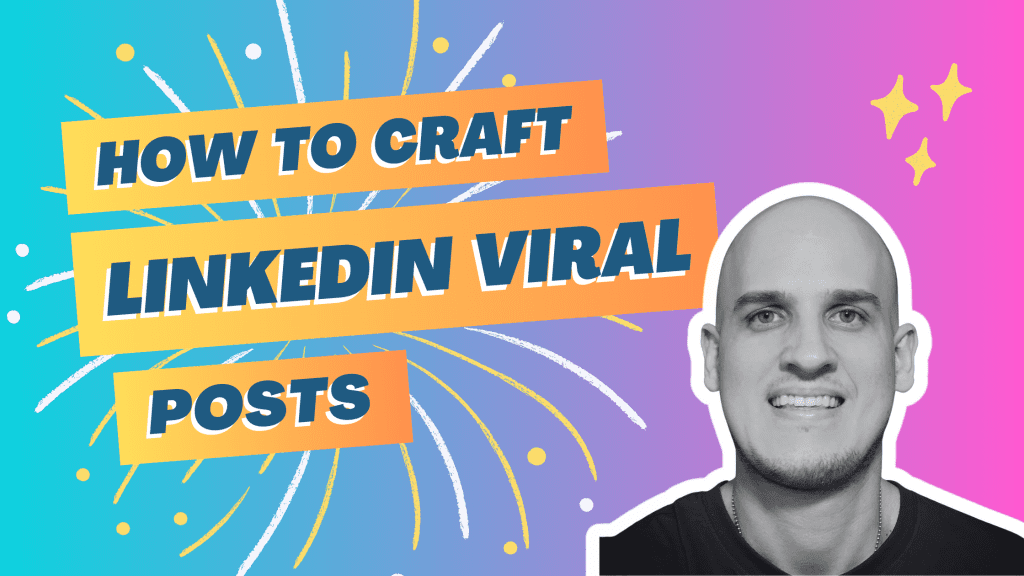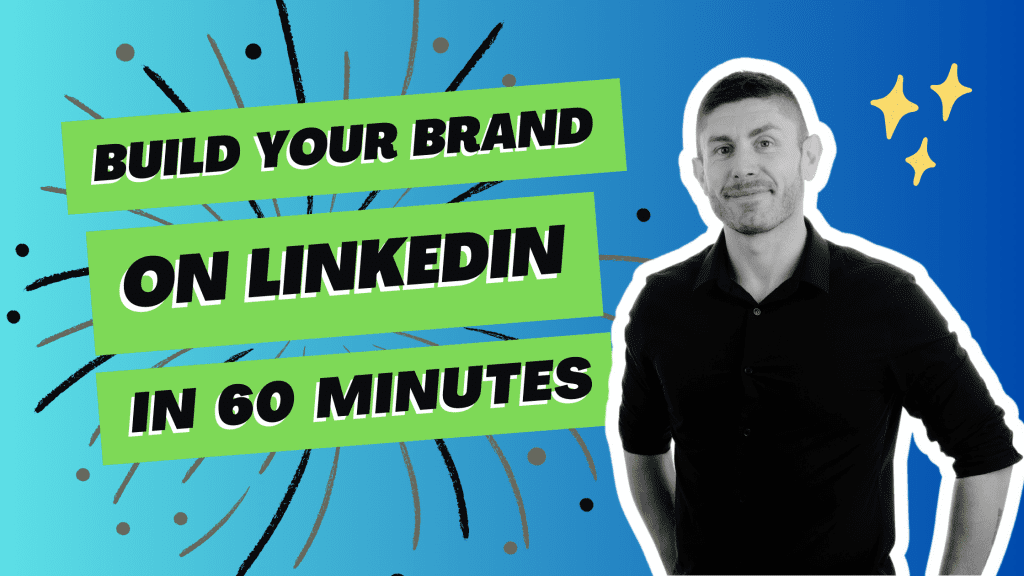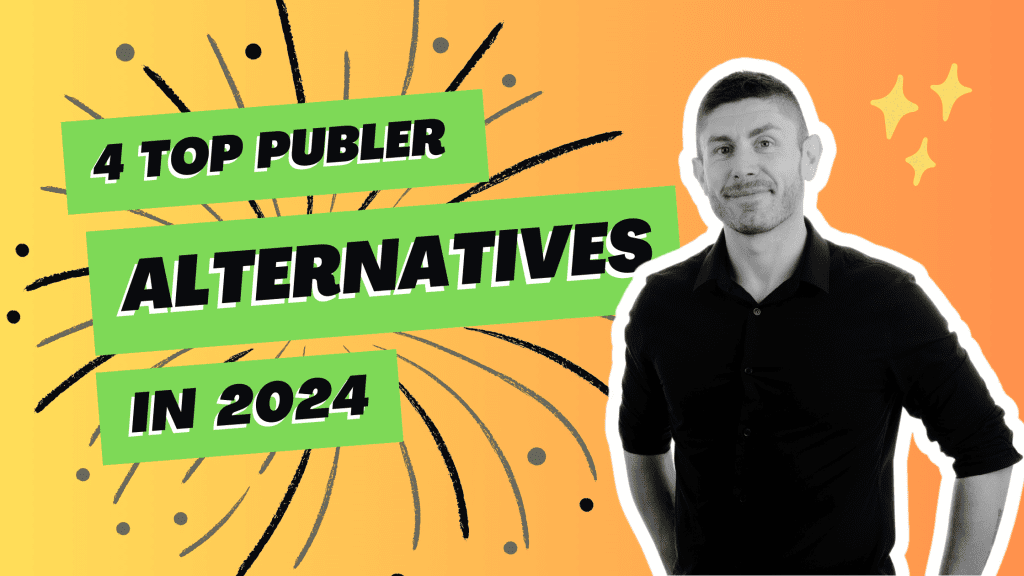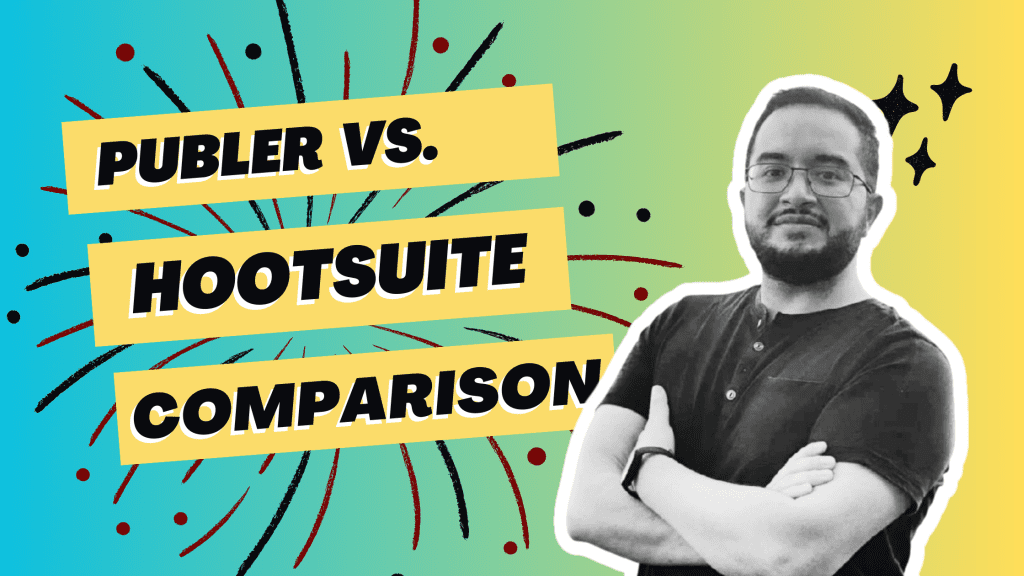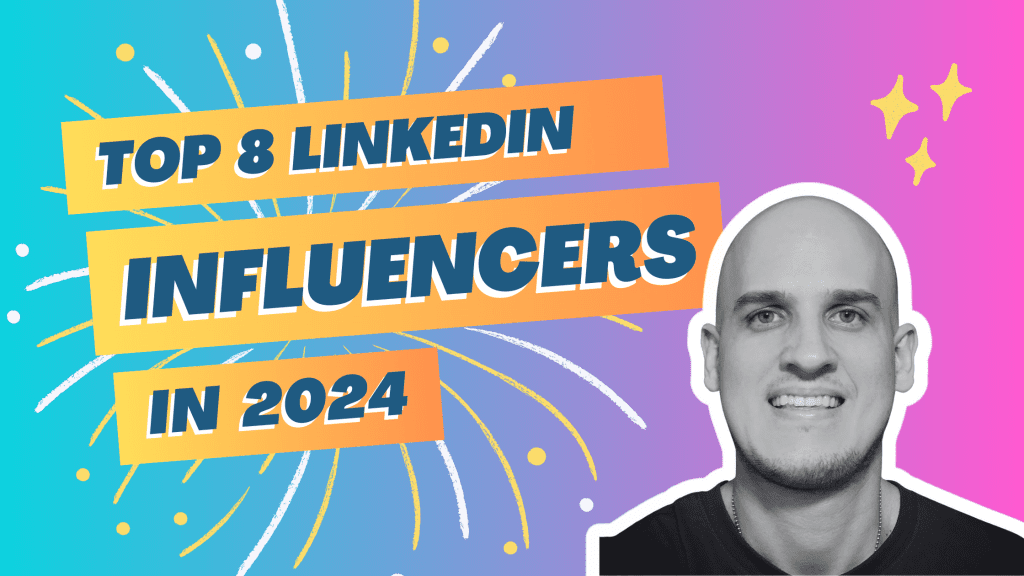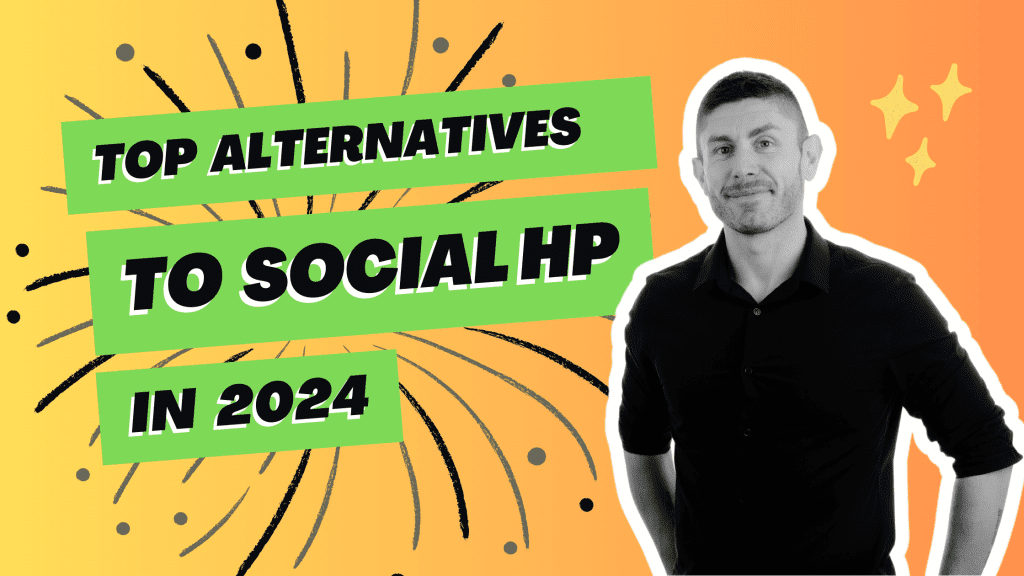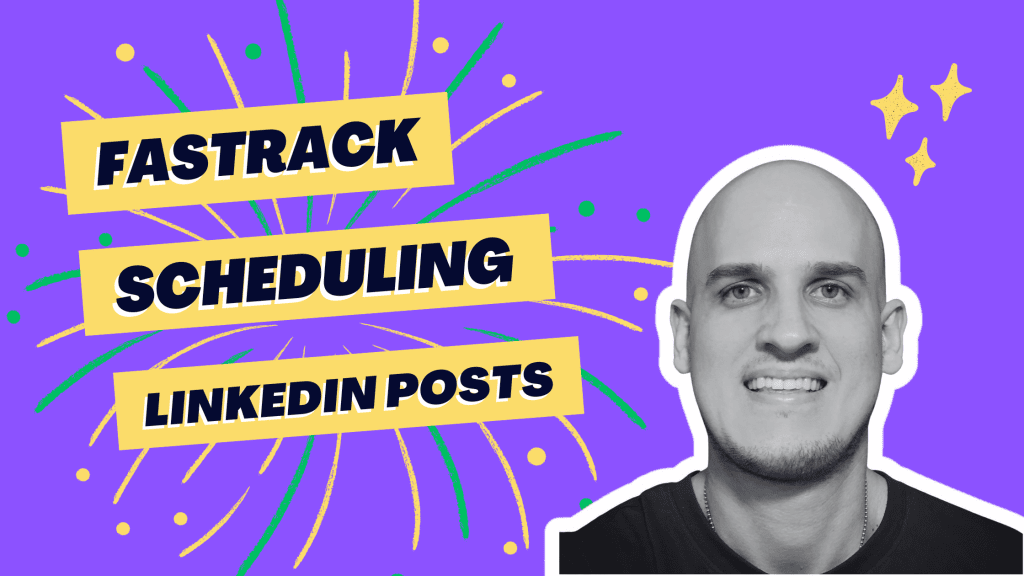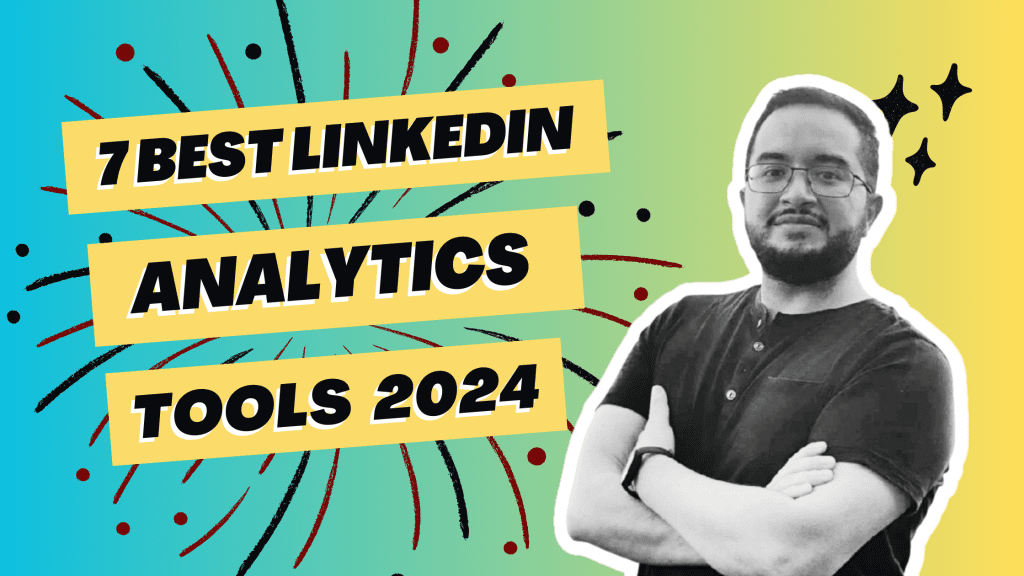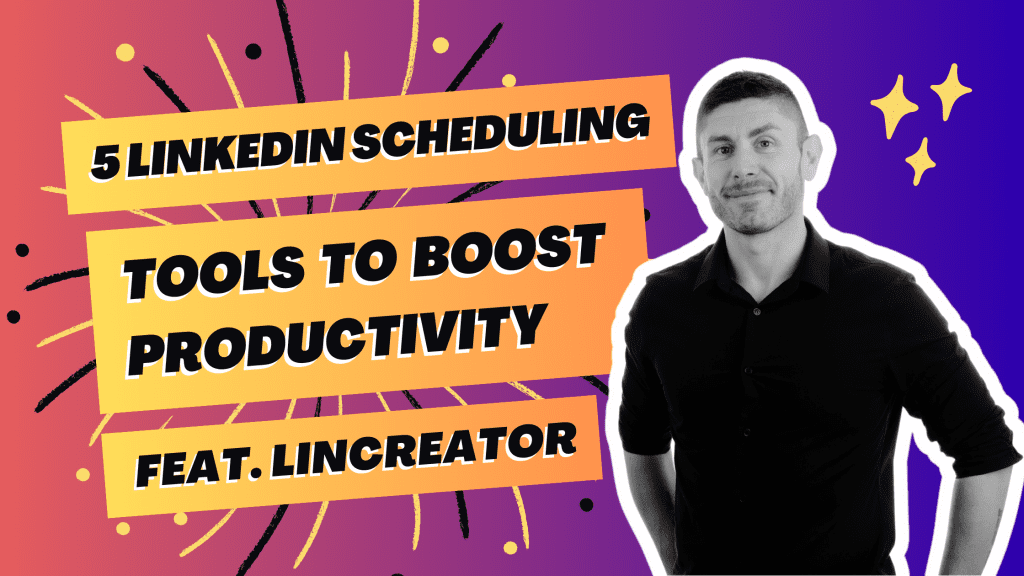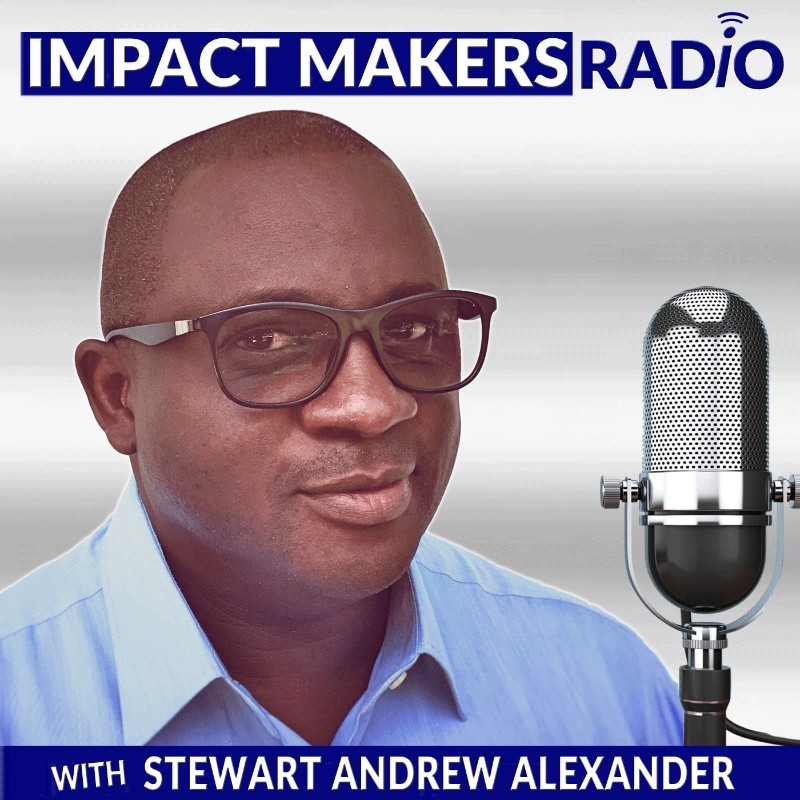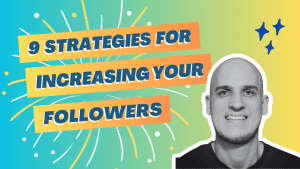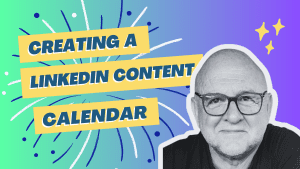Navigating the nuances of professional networking online, such as enhancing skills, optimizing a personal profile, engaging with company pages, and crafting LinkedIn posts, can be daunting for newcomers. This guide demystifies the process, offering step-by-step advice on publishing your first LinkedIn post or article that resonates with your intended audience through your personal profile. With a focus on clarity and impact, we’ll help your business understand how to leverage this powerful platform to its fullest potential, optimizing your company page and engaging with your target audience in marketing efforts. Whether it’s expanding your network, sharing industry insights, or publishing marketing articles, crafting a compelling LinkedIn post or blog is an essential skill in today’s digital landscape.
Assembling the perfect blend of professionalism and personality on your profile and company page is key to standing out among millions of users and people. By following our beginner-friendly tips for crafting LinkedIn posts, you’ll learn how to convey your message effectively on your company page and engage people within your field while adhering to best practices that establish credibility.
Key Takeaways
Start your LinkedIn journey by focusing on creating content that resonates with the platform’s professional audience; tailor your message to add value to your network.
Structure your posts with clarity and intent; use a compelling hook, valuable insights, and a clear call-to-action to engage your readers effectively.
To maximize engagement, interact with your audience by responding to comments and participating in relevant conversations, which can increase your post’s visibility.
Consider leveraging tools like LinCreator to enhance and streamline your content creation process, making your posts more appealing and professional.
Measure the success of your LinkedIn posts through analytics to understand what works best for your audience, and use this data to inform your future content strategy.
Embrace a diverse content strategy that includes various post types and topics, but prioritize quality and relevance over sheer frequency to build a strong personal brand on LinkedIn.
Crafting Your First LinkedIn Post
Importance
Your first LinkedIn post on your company page can set the stage for your online professional identity, engaging people. It’s more than just a company page update; it reflects who you are in the business world through your LinkedIn posts and blog post. A well-crafted LinkedIn post helps to establish a strong company presence on the platform. This is crucial because it shapes how others perceive you and your company professionally.
When visitors come across your profile page, your content, including your blog, gives people a glimpse of your company’s expertise and interests. Think of it as an opening statement on your company blog page that could lead to new opportunities or collaborations.
Profile Optimization
Engaging Bio
An engaging bio on your company blog page serves as a quick introduction to who you are and what you do. To make your blog stand out, highlight skills and experiences that set you apart from others on the company page. Use industry-related keywords in your company blog for better search visibility.
Remember, keep your company blog post short but powerful – aim to leave readers wanting more.
Professional Photo
A professional photo is key in making a good first impression on LinkedIn. Choose one where your face is clearly visible with good lighting. The background should be simple so it doesn’t distract from the main subject: you. Dress as though going for an interview within your field – this shows professionalism.
Content Creation
Valuable Connections
Building connections on LinkedIn isn’t just about increasing numbers; it’s about creating meaningful relationships within the industry. Connect with leaders and peers by sending personalized messages along with requests. This approach emphasizes quality interactions over having numerous contacts.
Connect thoughtfully
Personalize messages
Seek quality connections
Engaging Content
To engage followers, share insights relevant to what’s happening in your field. Ask questions through posts to start discussions among professionals. Varying content types keeps things interesting – mix articles, visuals, and personal updates regularly.
Here’s how:
Share fresh ideas or news related to your sector
Ask open-ended questions linked with current trends
Understanding LinkedIn Users
User Psychology
To connect with your audience on LinkedIn, know what drives them. People engage with content that speaks to their interests and professional needs. Your first post should tap into these areas to catch attention.
Think about the emotions behind why people use LinkedIn. They want to grow professionally and find opportunities. Use this knowledge to craft posts that resonate deeply. For example, share a story of overcoming work challenges or learning new skills.
Structuring Posts Effectively
Clear CTAs
Every LinkedIn post should guide readers on what to do next. Clear CTAs (Call To Actions) are crucial for this. Encourage actions like ‘comment below’ or ‘share if you agree’. Use action-oriented language to create a sense of immediacy. It’s best to place these CTAs where they’re easily seen, such as the end of your post.
For example, after discussing a professional topic, you might add, “Share your thoughts in the comments!” This simple invitation can increase interaction significantly. Remember, direct and clear prompts tend to get better results.
Post Structure
Native Videos
Videos grab attention quickly. For LinkedIn, it’s best to upload videos directly onto the platform—known as native videos—for greater reach and engagement. Keep these under 2 minutes; short clips maintain viewer interest better than longer ones.
Start with a captivating hook—a surprising fact or an intriguing question works well—to keep viewers watching. A good beginning ensures that more people will watch your video all through.
LinkedIn Pulse
When crafting longer posts, consider using LinkedIn Pulse. This feature is perfect for publishing more in-depth content like articles or professional insights. Follow Pulse’s guidelines closely for better visibility within the platform.
To boost exposure on Pulse:
Use relevant tags.
Engage with other users’ content.
Share your published pieces across networks.
Using tags helps others find your content when they search those topics on LinkedIn.
Maximizing Engagement
Engagement Tips
Good engagement on LinkedIn starts with interaction. When you post content, be ready to join the conversation. Respond promptly to comments to show your audience that you value their input. This can turn a simple post into a lively discussion.
It’s also important to be active in other ways. Regularly like and comment on content from others. This helps build relationships and makes it more likely they’ll engage with yours.
Encourage colleagues to interact with your posts as well. Their engagement can boost visibility within their networks too.
Visuals Enhancement
Titles Wisdom
A compelling title is key for attracting readers. It should promise them something valuable if they continue reading. Keep titles under 60 characters so people can grasp them quickly. Using numbers or posing questions often leads to higher click-through rates.
Visuals in Pulse
When writing Pulse articles, visuals are essential every few paragraphs. Charts or infographics work well for illustrating points clearly. Always choose visuals that match what you’re talking about in the article.
Blogging on LinkedIn
Writing Best Practices
When crafting your first LinkedIn post, it’s crucial to keep your paragraphs short and easy to digest. Readers often skim through content, so breaking text into small chunks helps maintain their attention. Start by introducing one idea per paragraph. This approach makes the information clear and straightforward.
Before hitting publish, take time to edit your work thoroughly. Check for errors in grammar and ensure that each sentence is crystal clear in meaning. Clarity is key in communication, especially when you’re trying to establish a professional image on LinkedIn.
To further enhance readability, use bullet points or numbered lists where appropriate:
Bullet points break up dense text.
Numbered lists provide step-by-step clarity when explaining processes or instructions.
Remember: the goal is to convey your message with precision and simplicity.
Editing and Packaging
Promoting Blogs
Once you’ve edited your LinkedIn blog post, consider how you’ll share it with others. A good strategy is posting excerpts of the blog on both LinkedIn and other platforms like Facebook with a link back to the full article. This not only teases the content but also drives traffic from multiple sources.
Don’t forget about networking opportunities within LinkedIn itself:
Tag co-authors or contributors.
Use relevant hashtags related to your topics for better discoverability.
These steps help expand reach beyond just your immediate network by engaging with others who might be interested in what you have written.
Common Mistakes
Even seasoned writers can slip up when creating content for social media platforms like LinkedIn. Avoid making posts too promotional; this can turn readers off quickly if they feel they’re being sold something rather than informed or entertained.
Proofreading should never be overlooked as spelling mistakes or grammatical errors can seriously harm credibility—always give it another read before publishing!
Lastly, while tackling controversial topics may seem enticing for engagement purposes, proceed with caution unless such discussions align closely with your personal brand or company ethos:
Steer clear of controversy if irrelevant.
Maintain professionalism at all times.
Frequency vs. Perfection
Marketing Lifecycle Stages
Crafting your first LinkedIn post means understanding where your audience stands in their journey. Tailor each post to match the stage of your followers in the marketing lifecycle.
For those at the awareness stage, educational content works best. It introduces them to concepts and solutions they may need. Think about blog posts that answer common questions or infographics that break down complex ideas.
When targeting followers in the decision stage, a different approach is needed. Here, testimonials and case studies are powerful tools. They showcase real-life success stories and help build trust with potential customers.
Posting Frequency
Now let’s talk about how often you should post on LinkedIn after crafting your initial entry into blogging on this platform.
First, aim for a consistent posting schedule without bombarding your network with too much content. Overwhelming followers can lead them to disengage from your posts altogether.
Test different times and days to discover when you get more likes, comments, and shares—this helps find an optimal frequency for engagement.
Remember: quality over quantity always takes precedence. One must prioritize creating valuable posts over simply aiming for high frequency.
Boosting with LinCreator
Web Traffic Increase
Crafting your first LinkedIn post can be a powerful tool to drive traffic to your website or blog. By including trackable links in your posts, you create a direct path for followers to find more of your content. These links not only boost visits but also allow you to measure the success of your LinkedIn activities through web analytics tools.
Offering exclusive content on LinkedIn that readers can’t find elsewhere is another effective strategy. This could be a special article or access to video content that requires visiting your site. It’s an enticing way for users to engage further with your brand.
Use trackable links in posts.
Create exclusive LinkedIn content.
Measure traffic using analytics tools.
The data from these tools helps refine future posts for better performance and increased referral traffic from LinkedIn.
Lead Generation
Views Boosting
To maximize visibility and generate leads, it’s crucial to understand the best times for engagement on LinkedIn. Posting during peak hours when most of your network is active increases the chances of high post views. Before and after sharing a post, actively engaging with other users’ content can amplify reach as well, creating a cycle of interaction that benefits all participants involved.
LinkedIn groups are hubs where professionals discuss niche topics. Sharing relevant and valuable content within these groups exposes you to new audiences who might need what you offer.
Engage around posting time.
Post during network peak hours.
Share in relevant LinkedIn groups.
Encouraging Sign-ups
A successful lead generation tactic involves offering something valuable like free ebooks or webinars directly through LinkedIn posts—enticements which encourage sign-ups or subscriptions. Make sure the process is straightforward by providing direct sign-up links right in the post itself, making it as easy as possible for interested parties.
Your copy should clearly outline what benefits subscribers will receive upon signing up; this clarity ensures potential leads are informed about what they’re gaining from their action:
Offer incentives like freebies.
Include direct sign-up links.
Detail benefits clearly.
Each element—from timing and engagement strategies down to how effectively you communicate value—plays its part in crafting compelling calls-to-action within each post designed specifically towards generating meaningful leads via this professional networking platform.
Measuring Success
LinkedIn Analytics
After crafting your first LinkedIn post, it’s crucial to track its performance. LinkedIn Analytics provides valuable data on how your content resonates with your audience. Here, you can see which posts capture attention and drive action.
Monitor key metrics such as likes, comments, shares, and views for each post. This tells you what works and what doesn’t. Over time, these metrics reveal engagement trends. Are more people interacting with video content or articles? Such insights help refine future posts.
Adjusting your strategy is essential for growth on LinkedIn. Use the data from analytics to tweak your approach. If a certain topic generates buzz, consider focusing more on that area in upcoming posts.
Metrics Understanding
Understanding which metrics matter helps gauge the success of your efforts accurately.
Focus on engagement rate, which shows the percentage of viewers who interacted with a post. A high engagement rate often indicates relevant content that sparks interest among professionals in your network.
Click-through rate (CTR) measures how often people click on links within your post compared to total impressions. It’s a strong indicator of whether headlines or calls-to-action are compelling enough to prompt further action.
Follower growth is another critical metric; it reflects long-term value creation through consistent posting efforts.
However, not all numbers are equally important—some may be misleading “vanity metrics.” Likes alone don’t tell much about business impact but combined with other indicators they can provide context to overall performance.
Set goals based around meaningful KPIs (Key Performance Indicators). For instance:
Increase engagement rate by 2% over three months.
Achieve a CTR above industry average within six months.
Grow follower count by 10% this quarter.
These objectives should guide content creation and posting frequency decisions moving forward.
Diversifying Content Strategy
Content Diversification
Crafting your first LinkedIn post involves more than just writing text. Diverse content keeps followers interested. Try different types of posts:
Text updates share quick thoughts.
Articles go in-depth on topics.
Photos capture attention quickly.
Videos engage viewers longer.
Each type has its place. Use a mix to find what works best for you and your audience. Look at how each performs over time. This will show you what resonates most with your network.
Also, vary the subject matter of your posts:
Share industry news to keep followers informed.
Offer personal insights to show expertise and opinions.
Update about company events or milestones for transparency.
This balance shows a well-rounded profile that adds value in multiple ways.
Target Audience Engagement
Understanding who interacts with your content is crucial. Notice patterns among those who frequently engage with your posts. Maybe they work in similar industries or hold comparable job titles.
Once you identify these common traits, create audience personas:
Start by listing key characteristics of engaged followers.
Group them into segments based on similarities.
Develop detailed personas representing each segment.
Creating content tailored to these personas can boost engagement significantly because it feels more relevant and personal to them.
For example, if young professionals often interact with your posts, consider topics like career development or new industry trends that might interest them more deeply than other subjects would.
Summary
Crafting your first LinkedIn post sets the stage for establishing a professional online presence. This guide has walked you through understanding the platform’s audience, structuring posts for impact, and engaging effectively with your network. By leveraging tools like LinCreator and analyzing your success metrics, you can refine your approach. Diversifying your content strategy ensures a dynamic profile that resonates with a broad spectrum of LinkedIn users.
To thrive on LinkedIn, balance frequency with quality and stay informed about best practices. Now is the time to apply these insights and embark on your journey to LinkedIn proficiency. Share your expertise, connect with peers, and contribute to professional dialogues. Begin crafting posts that reflect your professional identity and expand your digital footprint today.
Frequently Asked Questions
How do I craft my first LinkedIn post effectively?
Begin by understanding the audience on LinkedIn, structure your content clearly, and ensure it provides value. Aim for engagement by encouraging interaction.
What type of content maximizes engagement on LinkedIn?
Content that is relevant to your network, includes a clear call-to-action, and invites participation through questions or opinions tends to maximize engagement.
Is blogging directly on LinkedIn beneficial?
Yes, blogging on LinkedIn can increase visibility and establish thought leadership within your professional community.
How often should I post on my personal profile or company page on LinkedIn for the best engagement rate?
Quality trumps quantity. Focus on crafting well-thought-out posts regularly but prioritize substance over frequency.
Can LinCreator help boost my LinkedIn posts’ performance?
LinCreator can optimize your posts for better performance by providing analytics-driven insights into what resonates with audiences.
What metrics should I look at on my personal profile’s analytics dashboard to measure success and engagement rate on LinkedIn?
Engagement rates such as likes, comments, shares, and the growth of your network are key indicators of success.
Should my content strategy for the target audience be diversified across different types of posts, such as articles on a blog publishing platform?
Diversifying your content strategy helps reach broader audiences and keeps your profile dynamic. Mix up post types like articles, images, videos or polls.

